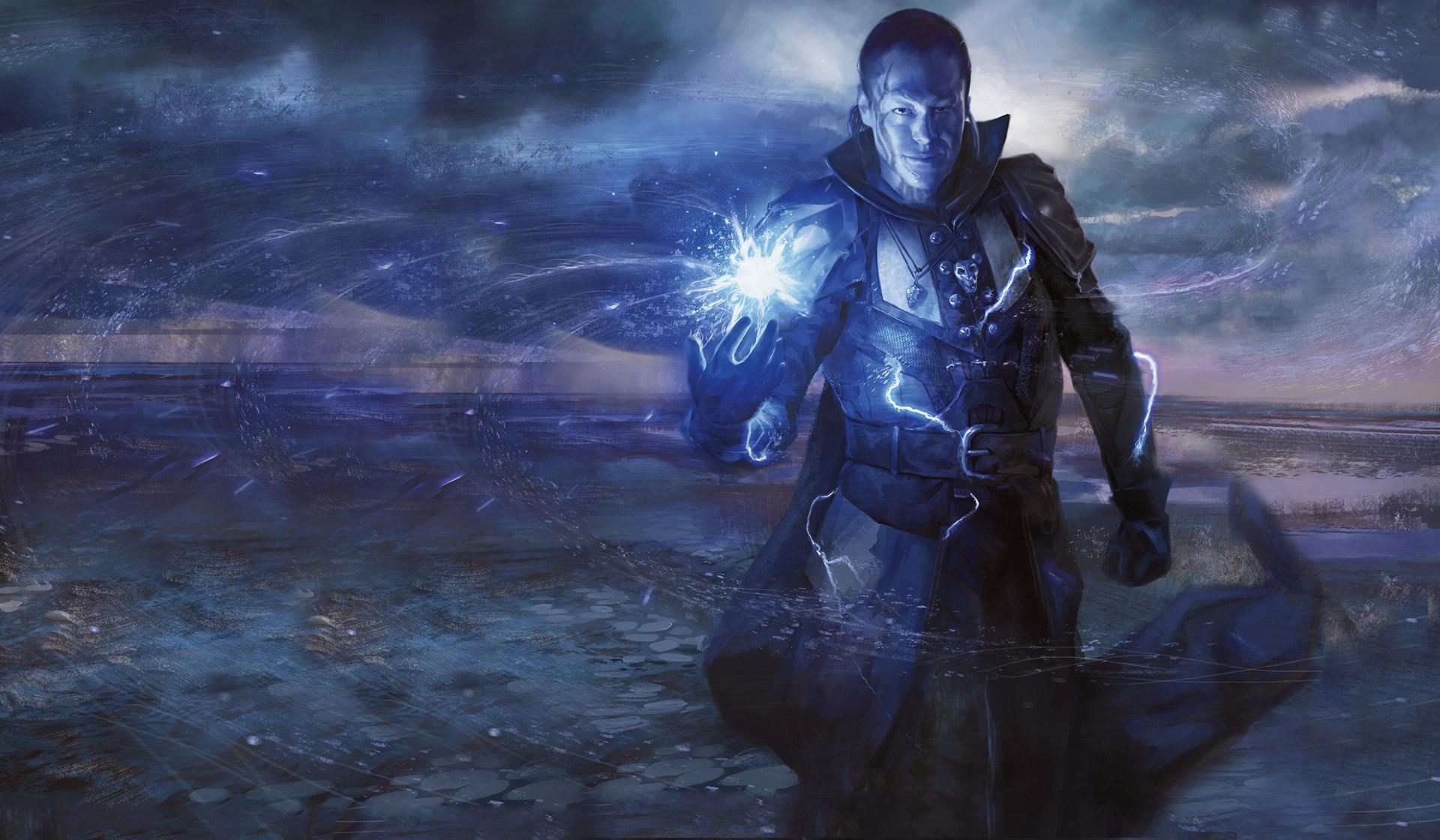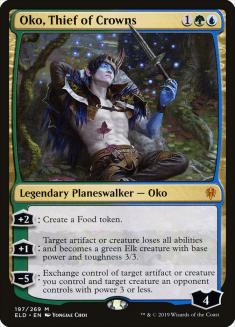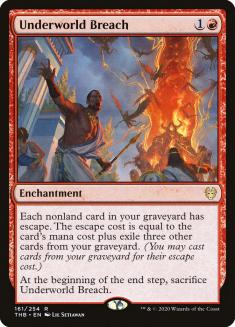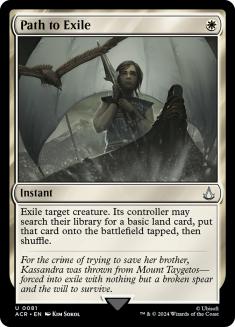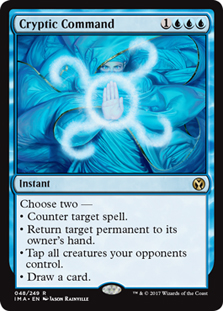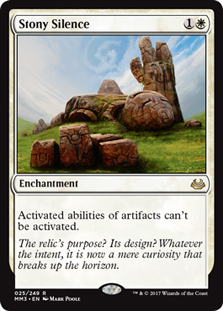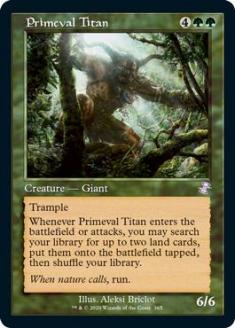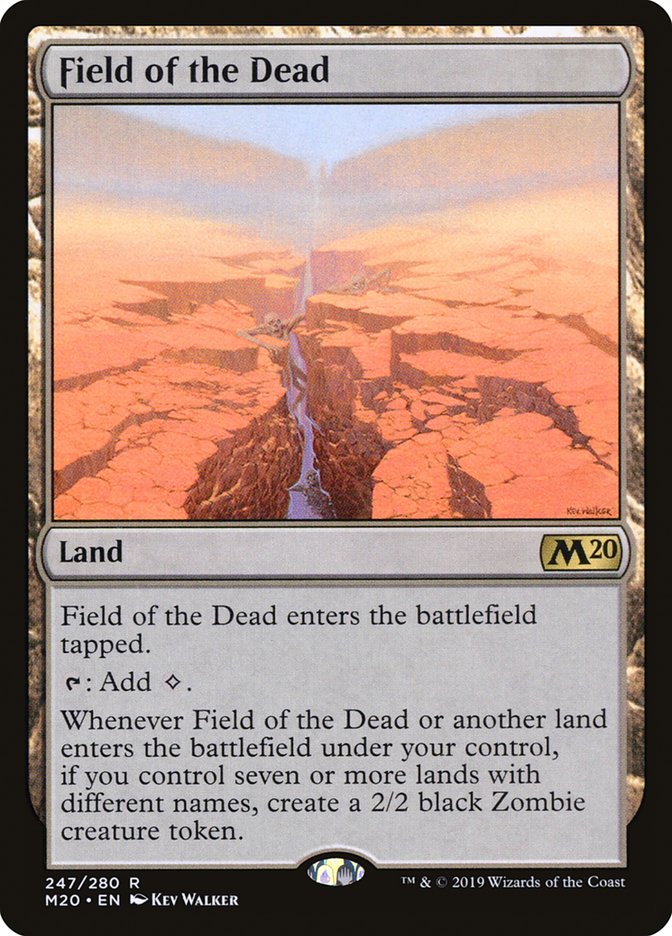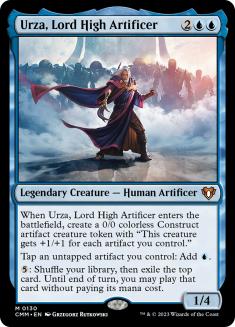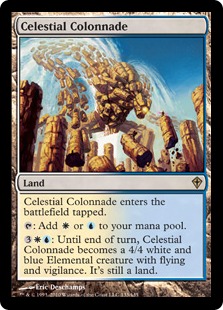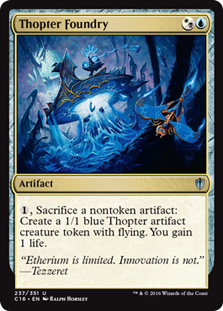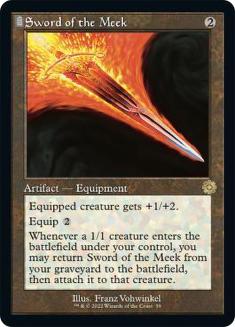A great deal has changed in Modern over the last few weeks. Primeval Titan is still the most feared Giant in town, but there’s a deck that’s forcing even the biggest monsters to watch their back. If you haven’t been plugged into the Modern metagame for a bit, you haven’t seen artifacts up to their nonsense again.
It seems that whenever Modern is having issues, artifacts are to blame. Oko, Thief of Crowns was problematic; however, it was the supporting cast of artifacts that really broke the format beyond repair. Creatures failed to take down the biggest planeswalker error in the history of the game and the under-costed artifacts made the Simic-based Urza decks as smooth as butter. We could have a long discussion about Arcum’s Astrolabe, Mishra’s Bauble, and Emry, Lurker of the Loch, and the harm that each of these have done. The list of grievances is long, but not productive. These cards exist, and if they do, control users must figure out a way to defeat them.
Grinding Breach is now upon us, the reincarnation of Ironworks. There are a few stakeholders who are always excited to see this deck emerge, then reemerge. Full disclosure – decks that circle around a broken artifact combo that takes a ton of game actions to kill, goes off on Turn 3, and is resilient to hate are bad for the game. Even as Ironworks became more polished, with a repeatable loop and a clean kill, the game actions to get there were often excruciatingly painful for the opponent to sit through. It broke the game with mana interactions that should not have been available, and Grinding Breach is doing the same thing.
Underworld Breach is another mistake right off the assembly line. Yawgmoth’s Will is an obvious relic of the past, with a very unhealthy gameplay history. Underworld Breach does the same thing but is legal in each competitive format now. It has a powerful shell in Pioneer, where it takes full advantage of a hexproof combo piece in Lotus Field. In Modern, it surrounds itself with the synergistic artifacts that I mentioned above and always seem to be right in the middle of each mess. Those artifacts join forces with Grinding Station, causing a mill loop, ultimately winning the game with Thassa’s Oracle. Who would have thought a self-mill strategy would be the top two decks in Pioneer and one of the top decks in Modern? This crazy metagame in Pioneer may change Monday with bans, but I doubt they will touch Modern this early. Ban or no ban, control has you covered against the top decks of Modern.
This isn’t a dark era for control and recent tournament finishes have shown the world that Cryptic Command is still viable. Azorius Control is still the most stock of the various options, having everything but a decent early-game removal plan locked up. Path to Exile is amazing, but it gets heavily taxed by waves of early creatures and provides the enemy with a boost of resources. The feeling I had using a Path to Exile to answer a Turn 2 Dark Confidant was utter despair. This type of play was necessary and still occurs today. It may not be a Dark Confidant as often as it is an Emry, Lurker of the Loch, but you get my point – providing the enemy with an early Rampant Growth usually doesn’t end well.
Outside of the early removal woes, Azorius Control has the tools to defeat the gauntlet of Modern decks, even with Primeval Titan at the top of the ticket. I don’t want to sugar-coat the matchup, because it’s not easy to take down Amulet Titan with a stock version of Azorius Control. Robert Seder has had recent success with a version about as plain as they come, but a few adjustments could help take down one of the top decks of the format.
Creatures (4)
Planeswalkers (8)
Lands (17)
Spells (31)

Seder is playing a dangerous game here, going low on Supreme Verdict to make room for additional counterspells. This is the correct move in Modern moving forward due to the popularity of Amulet Titan, the decline of aggressive decks, and the rise of Grinding Breach. Supreme Verdict doesn’t carry control across the finish line like it used to in Modern, but the reactive permission does.
Azorius Control is packing heat here with three Cryptic Command, one Dovin’s Veto, three Force of Negation, one Logic Knot, two Mana Leak, and one Vendilion Clique to top it off. That’s eleven disruption spells to interfere with both Amulet Titan and Grinding Breach easily. Seder also has three Snapcaster Mage, which provides one of the biggest draws to Azorius Control. Regardless of the setup, Snapcaster Mage provides extra copies of the spells deemed necessary for the metagame. In this case, they provide enough disruption Game 1 to shatter the control taboo of being weak against combo before sideboard. Typically, control setups like this are susceptible to any deck with creatures, but it seems that all the critters have temporarily left the format. There are still Mono-Red Aggro decks out there, but their creature package isn’t very intimidating. A deck like Humans that threatens to go wide doesn’t seem to have the viability it once had. For now, control can focus on bringing the heat to combo decks.
The planeswalker package that Seder ran is identical to what I have done with Azorius Control recently. When it’s too tough to decide on which planeswalker to cut, I just play them all. There are eight in total here, each very powerful on their own, and each also has a few matchups where they shine. Since aggro is dead, these planeswalkers are relatively safe from combat damage. That’s when Azorius Control is at its height and doesn’t have to rely on a set of perfect situations to create a clean battlefield in the early-game. When one of these three-mana planeswalkers arrive on an empty battlefield, the opponent is in a heap of trouble. It doesn’t get easier when Jace, the Mind Sculptor and Teferi, Hero of Dominaria arrive, all possible when counterspells are hitting targets with ease.
Grinding Breach will have issues with Seder’s maindeck, but sigh with relief at the sight of the sideboard. To be fair, this event was prior to the popularity of Grinding Breach, so I’m sure he would have taken the proper precautions before running it back. Stony Silence is a heavy hitter again, shutting down the combo deck in its tracks. Teferi, Time Raveler is their one lifeline to the lights-out enchantment, but the amount of Azorius countermagic makes that a tough one to resolve. A second one should be added in place of Gideon of the Trials, to join forces with the two copies of Rest in Peace.
Rest in Peace and Stony Silence are two of the best hate cards the format has to offer. Rest in Peace also hits a tough matchup in Crabvine, which is one of those creature matchups that can’t be solved by Supreme Verdict. There will always be graveyard decks running amok in Modern and Azorius Control will always be there to shut it down for the small price of two mana. The rest of the sideboard looks great and ready to tackle the metagame as is. Surgical Extraction, Stony Silence, Rest in Peace, and Monastery Mentor can all deal a blow to Grinding Breach, especially with the eleven counterspells to back them up.
Beating Amulet Titan with Azorius Control isn’t as easy and requires a good amount of reps against a skilled opponent. Primeval Titan fans now pack two Cavern of Souls, making the counterspell armada much weaker. Luckily, Azorius Control has four copies of Field of Ruin to disable the shield that land provides. Field of Ruin is the key in this matchup and requires appropriate timing to take the advantage. There are certain disastrous lands for the control hero, starting with Cavern of Souls. Experienced Amulet Titan players will deploy it right when required, making the first Primeval Titan uncounterable. Dealing with the creature and the land that same turn may not be enough, so fighting the resource war prior is your best bet on beating this foe.
Azorius Control has many counterspells and there aren’t that many spells in Amulet Titan. The deck has 31 lands in it, making the counterspells less powerful to hold as the game progresses. I’ve been able to stay positive against this deck for months by hitting an early play with a counterspell, landing a planeswalker, and being smart with Field of Ruin. This is one of those matchups where you must Path to Exile an early play, Sakura-Tribe Scout, because of how good it is in the matchup. Not only does it ramp them, it also protects their lands from Field of Ruin, making it a must-kill early on. The rest of their creatures that produce mana can do powerful things, but often I’m able to have them low on spells prior to the sixth land arriving.
It’s important to remember Amulet Titan’s exact list of lands. Knowing they have one Hanweir Battlements, one Field of the Dead, two Cavern of Souls, and two Valakut, the Molten Pinnacle is vital. This allows you actively shut down Zombie production, remove the ability to get a Primeval Titan with haste coming across the battlefield, or allow your counterspells to be live for the rest of the game. Seder’s Azorius Control has the elements to take down Amulet Titan with Ashiok, Dream Render and Aether Gust out of the sideboard, complementing an already strong maindeck. Some of us may want to choose an easier control option to tackle Amulet Titan, even at the slight expense of losing a few percentage points to Grinding Breach.
Creatures (4)
Lands (23)
Spells (33)

Out of the mind of Eli Kassis, Dimir Whirza was picked up by Harlan Firer and taken across the finish line at SCG Philadelphia earlier this year. Firer is no slouch with decks that summon Urza, Lord High Artificer, so this isn’t a surprise win by any means. The only shocking aspect of this deck taking down a few tournaments is the lack of credit control is given by Modern analysts out there.
Dimir Whirza is a control deck through and through with a small combo in the mix. This style deck is defined by the hand disruption, removal, countermagic, and late-game win condition that adds up to a traditional control deck. Modern still has room for control decks that rely on Thoughtseize and Inquisition of Kozilek, leading into the powerful counterspells that return with the help of Mystic Sanctuary. Both Azorius Control and Dimir Whirza depend on the sweet interaction of Mystic Sanctuary and any fetchland, showcasing the might of Cryptic Command. Cryptic Command and Mystic Sanctuary can create a semi-lock, which provides that prison aspect to control that hasn’t been around since Lantern Control. Take that piece, add in Thopter Foundry and Sword of the Meek, and you have yourself a deck that can do it all.
The matchup against Amulet Titan with Dimir Whirza is far better and only drops slightly against Grinding Breach. Since Grinding Breach will be all over the place this weekend at the various SCG Regionals locations, I would caution ditching Celestial Colonnade without considering that drop in matchup performance. Hand disruption is great against most combo decks, but having a ton of counterspells is better against a deck that doesn’t mind having some pieces taken away at the very beginning. The opposite is true for Amulet Titan. Since they have Cavern of Souls, they would prefer to see Mana Leak than Thoughtseize.
Having a mana-intensive combo kill isn’t great against Grinding Breach, but it’s fantastic against Amulet Titan. The matchup against Amulet Titan can go very long, allowing Dimir Whirza to have the advantage to end immediately. It helps that there’s little disruption from their end, making the Thopter/Sword combo nearly automatic. There are pros and cons between the two control decks but at least it’s evident that both are viable in this chaotic, combo-filled format.

